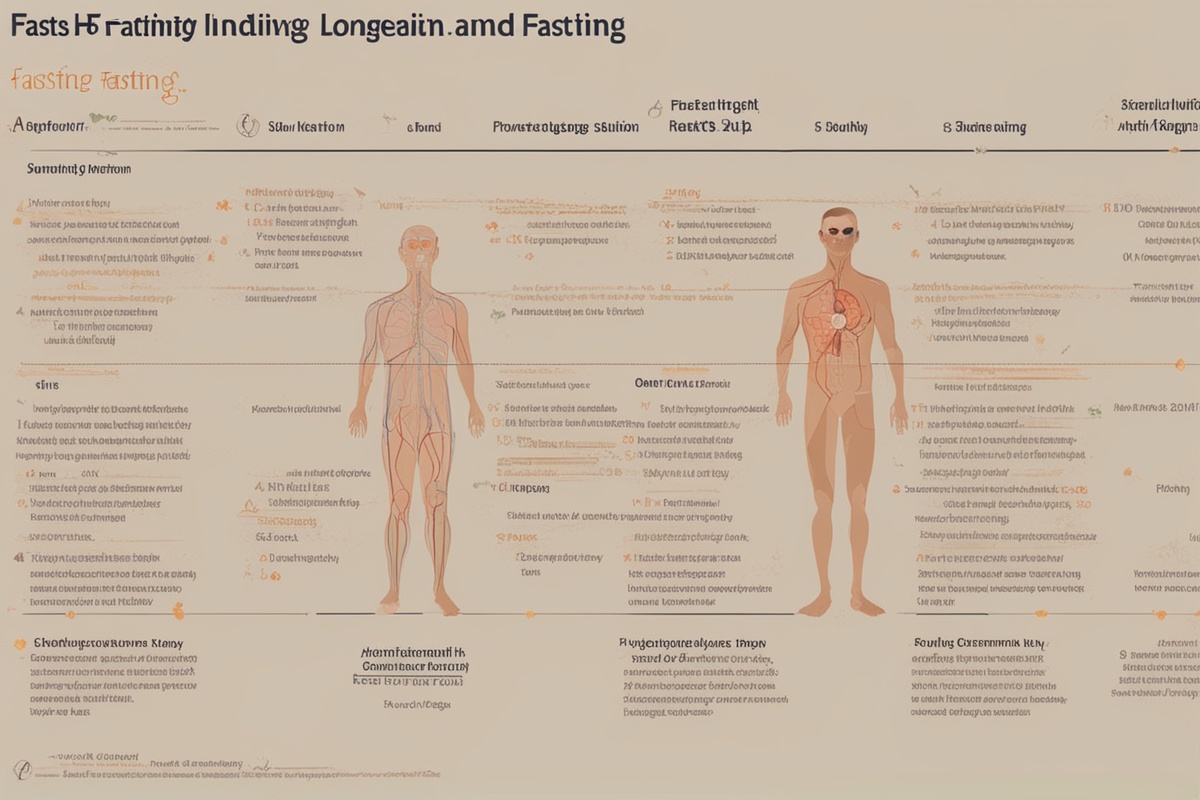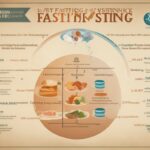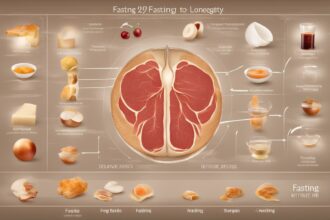Hey there, health enthusiasts! If you’re on a journey to live a longer, healthier life, you’ve likely stumbled across the concept of anti-aging fasting. It’s not just another wellness trend—it’s a scientifically backed practice that could be a game-changer for your longevity. Fasting, especially when tailored for anti-aging benefits, taps into your body’s natural repair mechanisms, fights oxidative stress, and may even slow down the aging clock. In this deep dive, we’ll explore how fasting promotes longevity, unpack the science behind it, and share practical tips to help you get started. Whether you’re new to fasting or a seasoned pro, let’s uncover how this powerful tool can transform your health and vitality.
What Is Anti-Aging Fasting and How Does It Work?
At its core, anti-aging fasting refers to structured periods of calorie restriction or complete abstinence from food to trigger biological processes that combat aging. Think of it as giving your body a break to “clean house.” When you fast, your body shifts from a state of growth and energy storage to repair and maintenance. This switch activates pathways like autophagy—a cellular cleanup process where damaged components are recycled—which is linked to reduced aging and disease risk (Levine & Kroemer, 2019). Fasting also lowers insulin levels and boosts human growth hormone, both of which play a role in cellular regeneration and longevity. By embracing fasting for longevity, you’re not just cutting calories; you’re tapping into ancient survival mechanisms that keep your body youthful at a cellular level.
The Science Behind Fasting for Longevity
Let’s get nerdy for a moment. The link between fasting and longevity isn’t just anecdotal; it’s grounded in robust research. Studies on animals and humans show that caloric restriction and intermittent fasting can extend lifespan by reducing oxidative stress and inflammation—two major drivers of aging (Fontana & Partridge, 2015). Fasting also enhances mitochondrial function, meaning your cells’ powerhouses work more efficiently, producing less harmful waste. One fascinating mechanism is the activation of sirtuins, proteins dubbed “longevity genes,” which fasting upregulates to protect against age-related decline (Guarente, 2013). Plus, fasting mimics the effects of a low-calorie diet, which has been shown to increase lifespan in various species. While we’re not lab rats, early human trials suggest that fasting for anti-aging benefits could delay chronic diseases like diabetes and heart disease, paving the way for a longer, healthier life (Longo & Mattson, 2014).
Types of Fasting for Anti-Aging Benefits
Not all fasting methods are created equal, especially when it comes to anti-aging fasting. The right approach depends on your lifestyle, goals, and health status. Here are some popular fasting protocols that research suggests can support longevity:
- Intermittent Fasting (16/8 Method): Fast for 16 hours and eat during an 8-hour window. This method boosts autophagy and improves metabolic health, key factors in aging gracefully (Patterson & Sears, 2017).
- 5:2 Fasting: Eat normally for five days and restrict calories to 500–600 on two non-consecutive days. It’s less intense but still offers anti-aging perks like reduced inflammation.
- Prolonged Fasting: Fasting for 48–72 hours under medical supervision can trigger deeper cellular repair, though it’s not for beginners (Longo & Mattson, 2014).
- Time-Restricted Eating: Limiting meals to a 10–12 hour window daily aligns with your circadian rhythm, supporting cellular health and longevity.
Each method has unique benefits, but they all share a common goal: giving your body a chance to reset and repair for better aging outcomes.
Practical Tips to Start Anti-Aging Fasting Safely
Ready to give fasting for longevity a shot? Before you dive in, remember that fasting isn’t a one-size-fits-all solution. It’s crucial to approach it thoughtfully to maximize benefits and avoid pitfalls. Here are some actionable tips to ease into anti-aging fasting while keeping your health in check:
- Start Slow: If you’re new to fasting, begin with a 12-hour overnight fast and gradually extend it to 14 or 16 hours. Rushing into long fasts can stress your body.
- Stay Hydrated: Drink plenty of water during fasting periods to support detoxification and prevent dehydration, which can mimic hunger.
- Focus on Nutrient-Dense Meals: Break your fast with whole foods like vegetables, lean proteins, and healthy fats to fuel cellular repair and avoid nutrient deficiencies.
- Listen to Your Body: If you feel dizzy, overly fatigued, or irritable, scale back. Fasting should feel sustainable, not punishing.
- Consult a Professional: If you have medical conditions like diabetes or are on medication, talk to a healthcare provider before starting any fasting regimen.
By easing into fasting with these strategies, you’ll build a routine that supports anti-aging benefits of fasting without overwhelming your system. Remember, consistency beats intensity—small, steady changes compound over time.
Potential Risks and How to Mitigate Them
While anti-aging fasting offers impressive benefits, it’s not without risks if done improperly. Fasting can lead to nutrient deficiencies, muscle loss, or even disordered eating patterns in some individuals. Research also warns that prolonged fasting without supervision may cause electrolyte imbalances or exacerbate underlying health issues (Wilhelmi de Toledo et al., 2019). Women, in particular, may experience hormonal disruptions if fasting is too aggressive, as caloric restriction can impact reproductive hormones. To stay safe, avoid extreme fasts unless guided by a professional, prioritize balanced nutrition during eating windows, and monitor how your body responds. If something feels off, don’t push through—adjust your approach. Fasting for anti-aging should enhance your life, not detract from it.
Combining Fasting with Other Longevity Practices
Fasting is powerful, but it’s not a magic bullet for longevity. Pairing fasting for anti-aging benefits with other healthy habits can amplify its effects. Regular exercise, for instance, boosts the same anti-aging pathways as fasting, like autophagy and mitochondrial health (Hawley et al., 2014). A diet rich in antioxidants—think berries, leafy greens, and nuts—can further combat oxidative stress during non-fasting periods. Don’t skimp on sleep either; poor rest can undo fasting’s benefits by spiking stress hormones. Mindfulness practices like meditation also complement fasting by reducing chronic stress, a known accelerator of aging. Think of fasting as one piece of the longevity puzzle—combine it with a holistic lifestyle for the best shot at a vibrant, extended life.
In wrapping up, it’s clear that anti-aging fasting isn’t just hype—it’s a promising tool for unlocking longevity and better health. From triggering cellular repair to reducing age-related disease risks, fasting offers a natural way to support your body’s resilience as the years go by. By starting with a manageable fasting protocol, staying mindful of your body’s signals, and pairing it with a balanced lifestyle, you can harness the anti-aging benefits of fasting safely and sustainably. So, why not give it a try? Take that first step toward a longer, healthier life today, and let fasting be your ally in aging gracefully. Got questions or experiences to share? Drop them below—I’d love to hear how fasting is working for you!
References
- Cell, 161(1), 106–118. https://doi.org/10.1016/j.cell.2015.02.020
- Guarente, L. (2013). Calorie restriction and sirtuins revisited. Genes & Development, 27(19), 2072–2085. https://doi.org/10.1101/gad.227439.113
- Hawley, J. A., Hargreaves, M., Joyner, M. J., & Zierath, J. R. (2014). Integrative biology of exercise. Cell, 159(4), 738–749. https://doi.org/10.1016/j.cell.2014.10.029
- Levine, B., & Kroemer, G. (2019). Biological functions of autophagy genes: A disease perspective. Cell, 176(1-2), 11–42. https://doi.org/10.1016/j.cell.2018.09.048
- Longo, V. D., & Mattson, M. P. (2014). Fasting: Molecular mechanisms and clinical applications. Cell Metabolism, 19(2), 181–192. https://doi.org/10.1016/j.cmet.2013.12.008
- Patterson, R. E., & Sears, D. D. (2017). Metabolic effects of intermittent fasting. Annual Review of Nutrition, 37, 371–393. https://doi.org/10.1146/annurev-nutr-071816-064634






